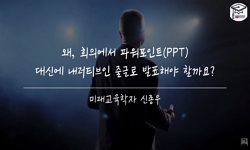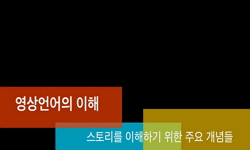굽타왕조시대(300-550 CE)는 산스끄리뜨 문학의 황금기였다. 대부분의 불교부파들이 당시의 조류에 효과적으로 대응하지 못한 반면에 설일 체유부는 그들의 논서에서 보여지듯이 정확성을 바...
http://chineseinput.net/에서 pinyin(병음)방식으로 중국어를 변환할 수 있습니다.
변환된 중국어를 복사하여 사용하시면 됩니다.
- 中文 을 입력하시려면 zhongwen을 입력하시고 space를누르시면됩니다.
- 北京 을 입력하시려면 beijing을 입력하시고 space를 누르시면 됩니다.

투고 논문 : 『근본설일체유부비나야(根本說一切有部毘奈耶)』의 내러티브 고찰(1) -붓다가 말먹이용 보리를 먹은 사연을 중심으로- = A Study on the Narrative of the Buddha`s Eating of Horse Fodder Barley in the Mulasarvastivadin Vinaya(1)
한글로보기https://www.riss.kr/link?id=A77026263
- 저자
- 발행기관
- 학술지명
- 권호사항
-
발행연도
2010
-
작성언어
Korean
-
주제어
근본설일체유부비나야 ; 전생업 ; 보리 ; 내러티브 ; mUlasarvAstivAdin vinaya ; karma ; barley ; narrative
-
KDC
155
-
등재정보
KCI등재
-
자료형태
학술저널
- 발행기관 URL
-
수록면
199-227(29쪽)
- 제공처
-
0
상세조회 -
0
다운로드
부가정보
국문 초록 (Abstract)
굽타왕조시대(300-550 CE)는 산스끄리뜨 문학의 황금기였다. 대부분의 불교부파들이 당시의 조류에 효과적으로 대응하지 못한 반면에 설일 체유부는 그들의 논서에서 보여지듯이 정확성을 바탕으로 하여 경전의 언어와 용어 체계를 통일시키면서 그들의 삼장(三藏, Tripitaka)을 산스끄리뜨로 번역했다. 근본설일체유부는 가능한 한 최소한의 수정을 하는 단순한 번역에서 훨씬 더 나아가서 그들의 삼장을 유려하게 다듬어 다시 쓰는 작업을 하였는데 아마도 교리에는 손대지 않더라도 문학적으로는 당시의 조류를 반영하여 그들의 삼장을 보다 대중적으로 만들려는 생각을 하였던 것 같다. 『근본설일체유부비나야』는 이러한 시도의 산물이다. 『근본설일체유부비나야』 는 다른 율장들에 비해 내러티브가 상당히 발전된 모습을 보이고 있다. 다른 율장들이 메시지 전달에만 치중해서 아주 단순하게 이야기를 전개하고 있는 반면에 『근본설일체유부비나야』에 소개된 많은 이야기들은 내러티브의 구조가 상당히 복잡해지고 다양한 복선이나 장치를 설정해 놓음으로써 문학적인 완성도를 높이고 있다. 이런 복선이나 장치들은 단순한 문학적 용도에 그치는 것이 아니라 당시의 종교 환경이나 시대상황을 파악할 수 있는 다양한 정보를 제공하고 있다. 본고는 붓다가 말먹이용 보리를 먹은 에피소드를 중심으로 『근본설일체유부비나야약사』 속의 이이야기가 다른 율장이나 경장속의 이야기들보다 얼마나 내러티브 기능이 우월한가를 보이고자 한다.
다국어 초록 (Multilingual Abstract)
The Gupta period(300-500 CE) is the golden age of Sanskrit literature. While most Buddhist schools did not respond effectively to this trend, the Sarvastivadins translated their version of the Tripitaka into Sanskrit, standardizing the language and te...
The Gupta period(300-500 CE) is the golden age of Sanskrit literature. While most Buddhist schools did not respond effectively to this trend, the Sarvastivadins translated their version of the Tripitaka into Sanskrit, standardizing the language and terminology of their system in the interests of precision in exegesis. The Mulasarvastivadins went much further than simple translation with (possibly) a minimum of revision, and produced an elaborate rewriting of their Tripitaka, probably with the idea of assimilating it to current trends in literature (without, however, changing the doctrine) and so making it more popular. The Mulasarvastivadin Vinaya is the result of this effort. In comparison with other Vinayas, Mulasarvastivadin Vinaya shows impressively the upgraded feature in terms of narrative. While the stories of other Vinayas pay attention only at their messages, those of the Mulasarvastivadin Vinaya show the developed narrative with various devices and plots which label the Mulasarvastivadin Vinaya as the elaborate literary work. These devices and plots provide not only literary interest but also various informations on religious environment at that period. This is the episode about the Buddha`s human shortcomings in a previous life which have produced bad karma. This avadana is devoted to the story of how as a result of his bad karma the Buddha had to eat horse fodder barley. Among the Buddha`s so-called ten bad karma stories, which are often presented as a set, the Mulasarvastivadin Vinaya provides a separate version of this story in the Bhaisajyavastu section. Besides the main theme of the Buddha`s bad karma, I show how this text presents the following topics as its literary devices: the seven treasures of a cakravartin, equal opportunity without sexual discrimination for attaining Buddhahood, offerings (dana), aspiration (pranidhana), prediction (vyakarana) and Sariputra and Maudgalyayana`s exemption from bad karma. This paper aims to show the literary development and competitiveness of the narratives of the Mulasarvastivadin Vinaya through the study of this episode.
동일학술지(권/호) 다른 논문
-
발표 논문 : 깔리다싸(Kalidasa)의 서정시에 나타난 비유 고찰 -인도철학적인 의미를 중심으로-
- 인도철학회
- 임근동 ( Geun Dong Lim )
- 2010
- KCI등재
-
- 인도철학회
- 이은주 ( Eun Joo Lee )
- 2010
- KCI등재
-
발표 논문 : 초기 부파불교에서의 비유와 열반 -upadi 또는 upadhi 개념을 중심으로-
- 인도철학회
- 황순일 ( Soon Il Hwang )
- 2010
- KCI등재
-
발표 논문 : 자아(self)와 개인(person)에 대한 정의 고찰 -초기불교를 중심으로-
- 인도철학회
- 최경아 ( Kyung Ah Choi )
- 2010
- KCI등재




 KISS
KISS






